Most wasps are beneficial or nuisance insects but a few can cause damage to plants. Noteworthy among these are those wasps that strip bark from poplars, willows, birch, mountain-ash, boxwood or lilac to use for forming their paper nests. The giant hornet is also a pest of dahlias when it gnaws at the base of the plant, which can completely girdle the stem.
A number of wasps are beneficial to the home gardener, among them the parasitic trichogramma wasps, braconid wasps, and chalcid wasps. These wasps parasitize hundreds of different garden pests, from aphids, scale and mealybugs to the larvae of many beetles, moths and butterflies. These beneficial wasps are found throughout North America, and you can try luring them to your garden by providing the small-blossomed, single-blooming flowers upon which they rely for nectar. These wasps are also available commercially. Even more fortunately for the home gardener, they do not sting!
Wasps that do sting are considered predatory wasps. They include the mud dauber and paper, or social, wasps. The mud dauber is a solitary wasp that is practically harmless to people but ruthless to insects, so don't be overly concerned if you spot their muddy nests around your home's exterior. Paper, or social, wasps, can be more problematic, since they are much more likely to sting people, particularly if they perceive a threat to the nests which they aggressively defend. On the other hand, if these wasps are merely foraging in your garden for the food they provide for their entire brood, you should be able to work alongside them harmoniously provided you treat them with quiet respect. Bear in mind that some flowers are particularly attractive to foraging wasps, among them oxeye daisies, strawflowers, black-eyed Susan, goldenrod and yarrow. If you are allergic to bee stings or are otherwise averse to working closely with large numbers of wasps, avoid planting these flowers near areas you cultivate intensively.
Of the social wasps, the yellow jacket deserves special mention. Probably no description is required for most readers. However, for those who have not yet had the pleasure of being heckled by a persistent yellow jacket, these insects are easily distinguished by the bright yellow and black or white and black patterned bands decorating their abdomen. They measure 1/2" to 1" long and have clear wings. Another distinguishing feature is their stinger, which can be used numerous times (honeybees, on the other hand, can only use theirs once). Yellow jackets are at their most fearsome when defending their nests, which they construct underground or within cavities such as walls or hollow trees. If you approach too near, you may be charged head-on by a worker as a warning to stay away. Heed the warning, but avoid panicked running, arm-flailing, or screaming if at all possible, since these perfectly natural responses may only agitate the yellow jackets further.
Unfortunately, yellow jackets can be pretty aggressive well away from their nests as well. Favored garden targets include sweet, ripe fruit (in which the feeding insects will leave telltale holes) and gardeners themselves. Nevertheless, there are a number of ways gardeners can make themselves less prone to yellow jacket harassment. First of all, be on the lookout for nests and steer clear of them. Avoid perfumes and other heavily-scented toiletries. Follow the cue of beekeepers and don't wear light blue or yellow; white or dull beige are preferable. Since yellow jackets are least active early in the morning, this is a good time to schedule your garden chores if your schedule permits. Stay as calm as possible if a yellow jacket is near or on you; don't run or swing at them. Persons allergic to bee stings should remain away from areas where yellow jackets are active, and should consult a physician regarding medication available on prescription for emergency treatment of stings. Those less sensitive to bee stings but unfortunate enough to have received one can treat the sting with a paste of meat tenderizer and keep a cold compress over it. If possible, elevate the sting site and remain still for half an hour or more. Antihistamines, aspirin or acetometaphine may further alleviate symptoms.
If there are too many yellow jackets around your home and garden for your comfort, particularly in late summer, you can try decreasing their numbers by fashioning a trap. Tie a slice of melon, fresh fish or meat to a stick and suspend it over a 5 gallon bucket, preferably a blue one. Partially fill the bucket with water and add a squirt of dish soap, then place the trap away from people. Protect meat lures with netting or by constructing a protective cage, or erect a tripod to raise the bait out of the reach of any competing dogs, cats or other animals. To prevent future yellow jacket nests, you will have to trap the queen: in early spring, put out a yellow or blue shallow pan half-filled with sugar water and just a drop of liquid soap. If you find a yellow jacket floating around in the pan that is at least twice the size of the more numerous worker bees, then you have been successful in your quest.
If you want to eliminate an established underground nest of wasps, you will need to work quickly and at night. Pour a listed insecticide into the opening and then cover the entrance hole. You can also coax natural predators like hungry skunks, raccoons or opossums to do the dirty work for you by piling a mound of sweet molasses feed, suet or other treat by the entrance hole.
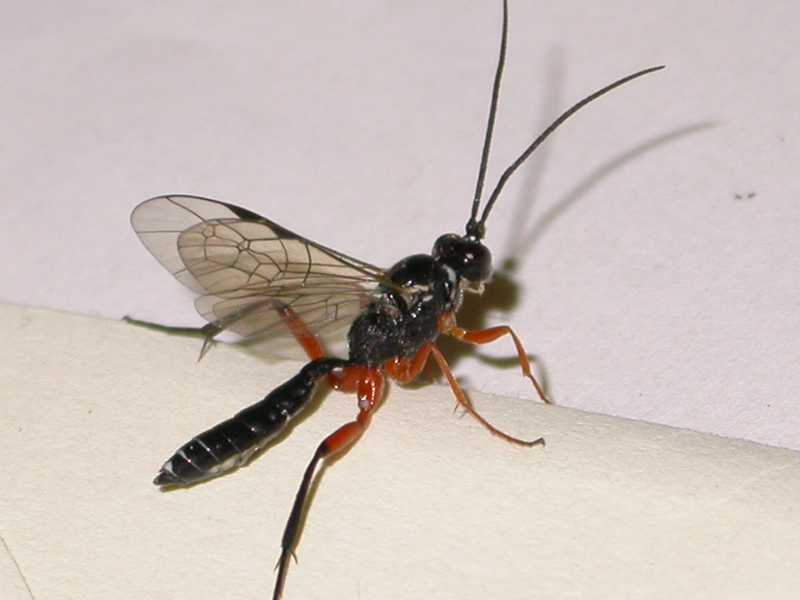 |
| Tiny Ichneumon wasp (Hymenoptera) |
|
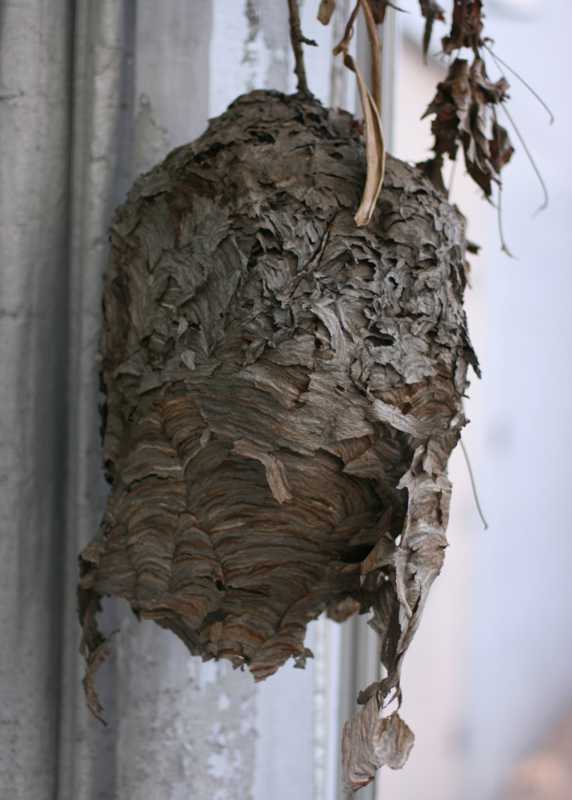 |
| Bald-faced hornets' nest. Hornets (Hymenoptera) are beneficial predatory wasps. Their nests should be left alone unless located where they endanger humans. |
|
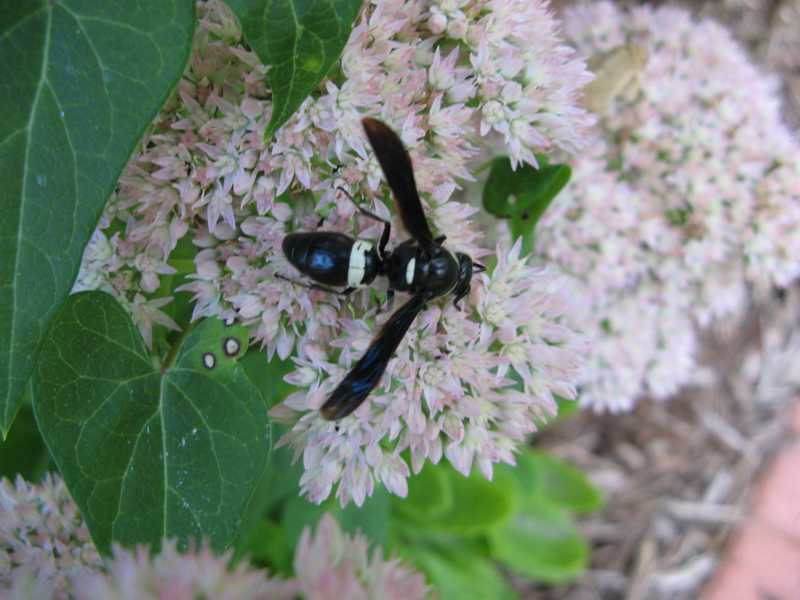 |
| Mason wasp, Monobia, pollinating sedum (Hylotelephium) |
|
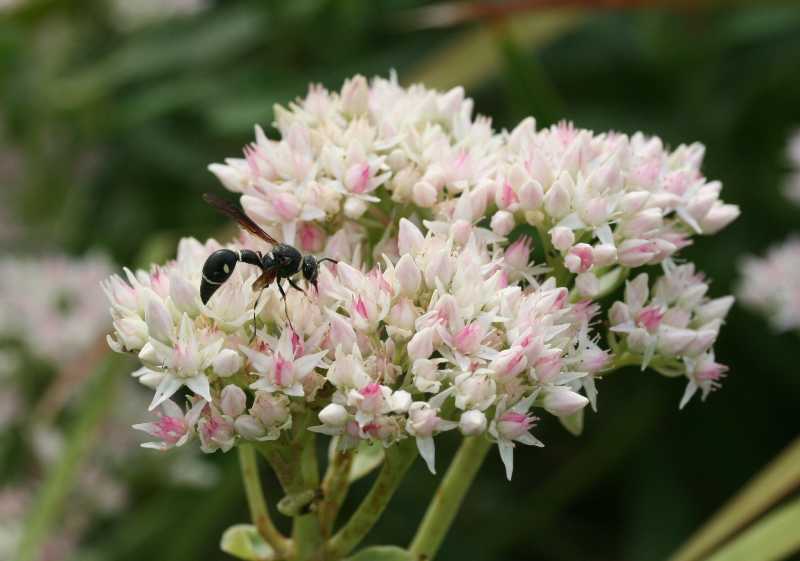 |
| Potter wasp, Eumenes fraternus, on sedum (Hylotelephium) |
|
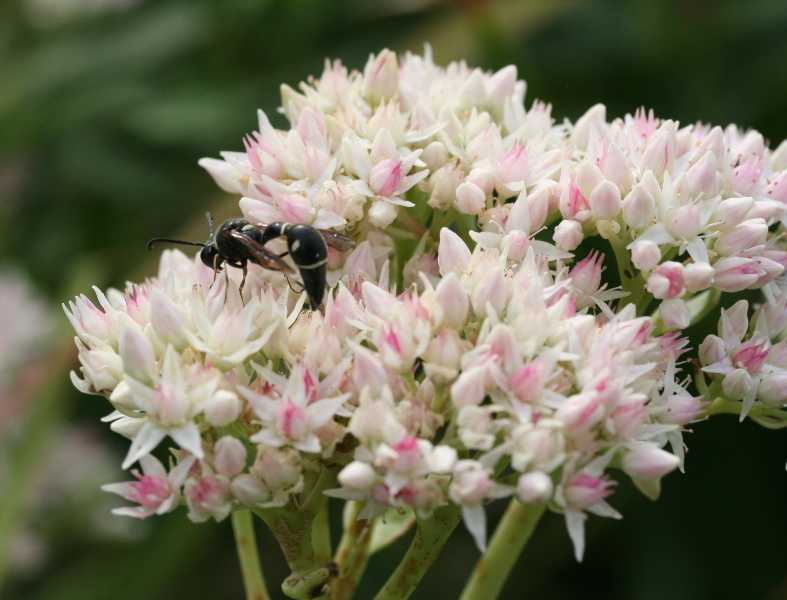 |
| Potter wasp, Eumenes fraternus, on sedum (Hylotelephium) |
|
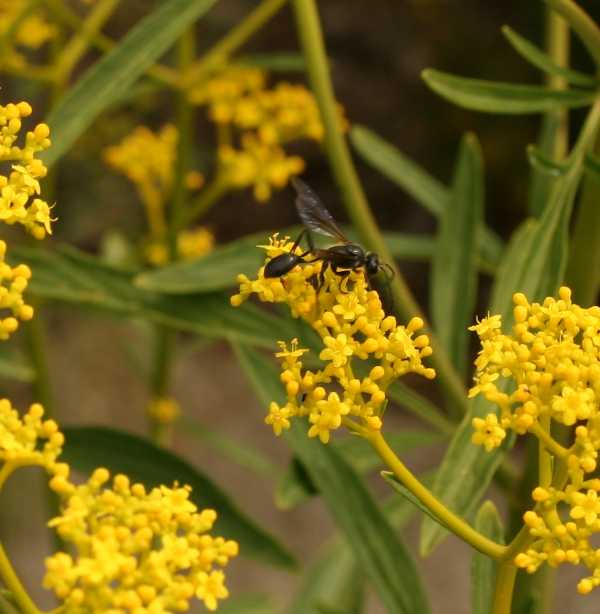 |
| Thread-waisted wasp (Hymenoptera) on patrinia (Patrinia) |
|
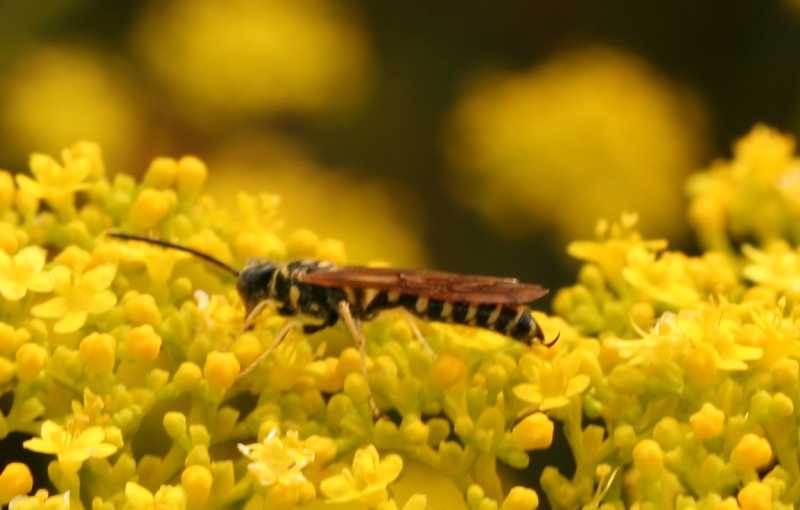 |
| Tiphiid wasp, Myzinum,) on patrinia (Patrinia) |
|
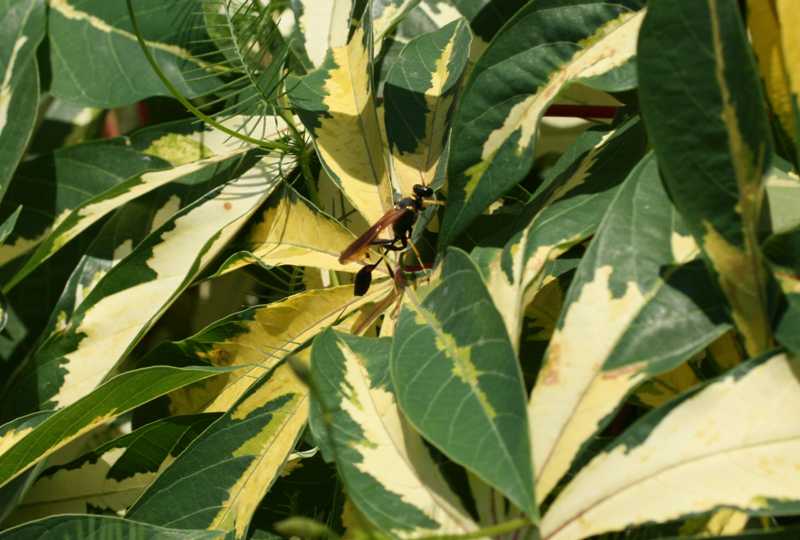 |
| Thread-waisted wasp (Hymenoptera) on variegated tapioca (Manihot); this is a species of Apoid wasp |
|
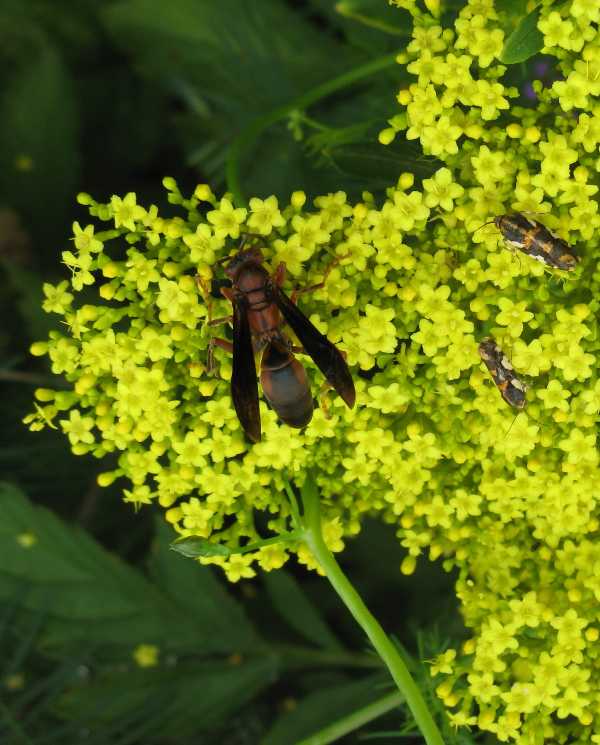 |
| Wasp (Hymenoptera) pollinating patrinia (Patrinia) |
|
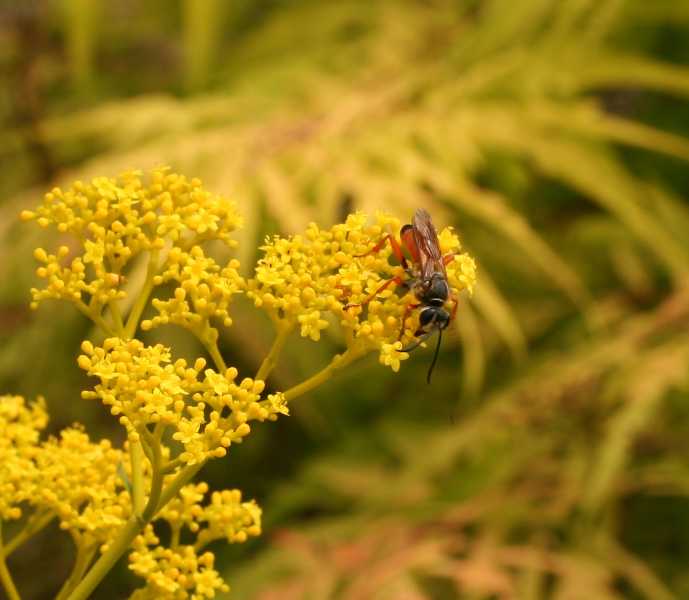 |
| Great golden digger wasp (Hymenoptera) pollinating patrinia (Patrinia); this is a species of Apoid wasp |
|
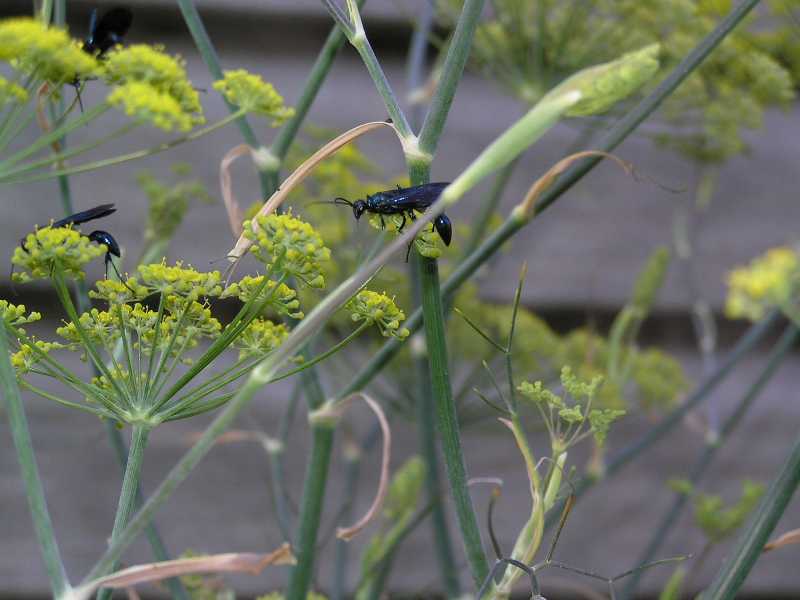 |
| Steel blue wasps (Hymenoptera) |
|
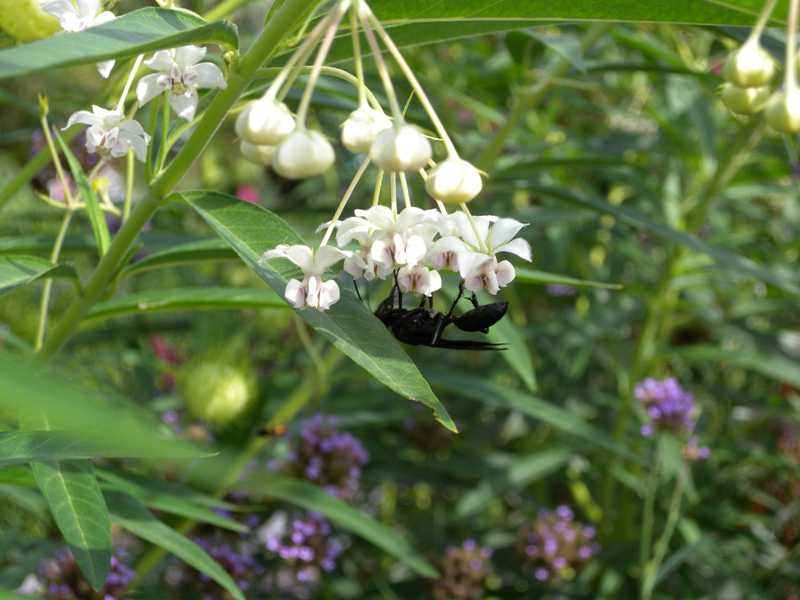 |
| A wasp (Hymenoptera) on annual milk weed (Ascelpias physocarpa 'hairy balls') |
|
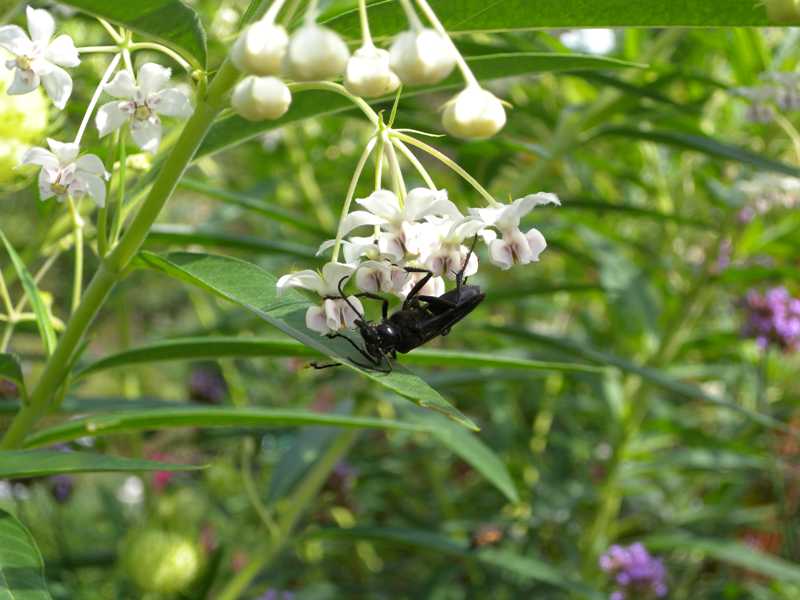 |
| A wasp (Hymenoptera) on annual milk weed (Ascelpias physocarpa 'hairy balls') |
|
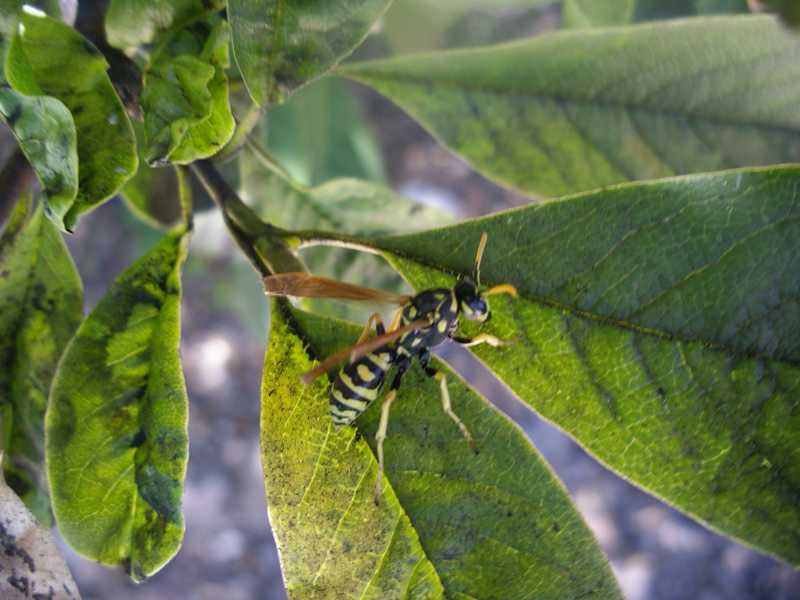 |
| European paper wasp (Hymenoptera) attracted to and feeding on honeydew from magnolia scale (Hemiptera); note: this is not a yellow jacket |
|
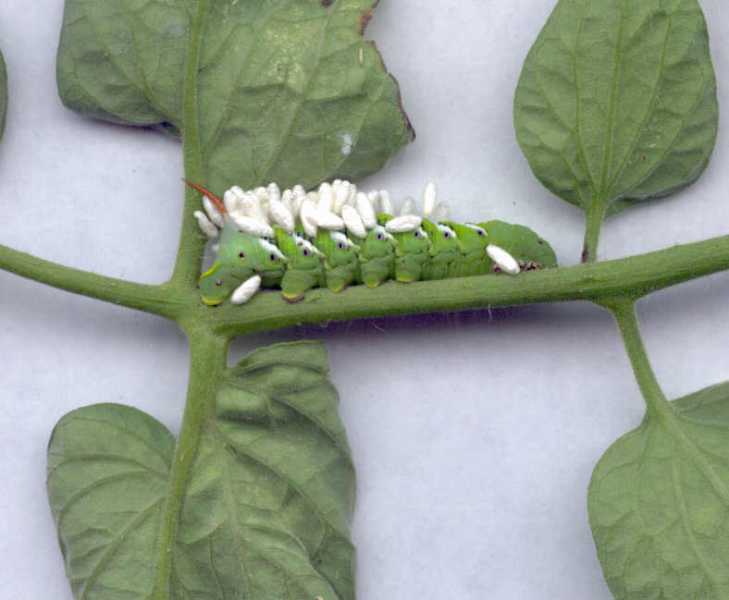 |
| Braconid wasps (Hymenoptera) are an important natural control of hornworms on tomato (Lycopersicon); note white eggs along back of caterpillar (Lepidoptera) |
|
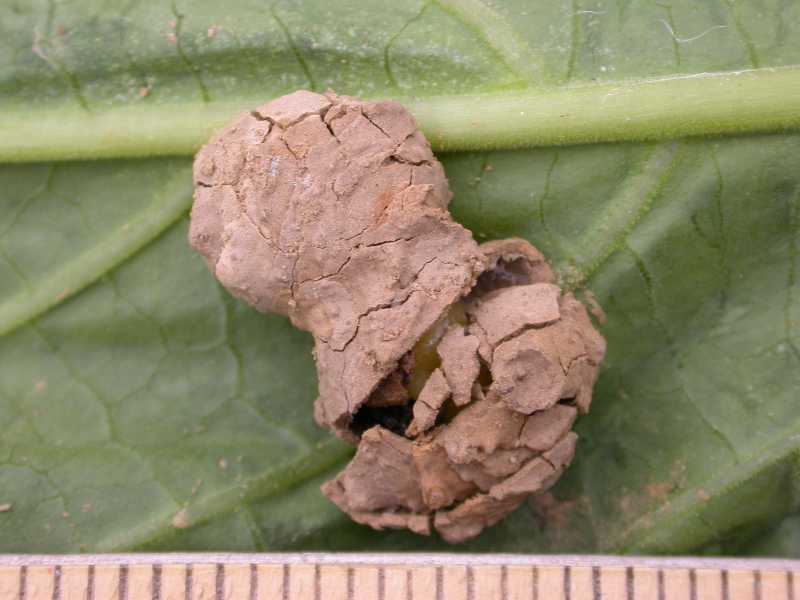 |
| Some solitary hunting wasps (Hymenoptera), like the mud dauber, create nest cells out of mud; most are considered beneficial |
|
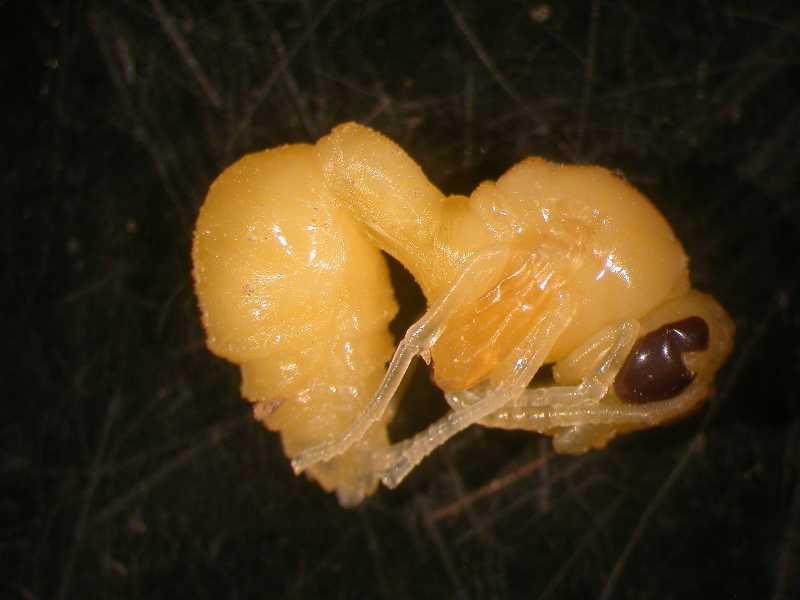 |
| Wasps (Hymenoptera) go through a complete metamorphosis; this is the pupal stage of mud dauber |
|
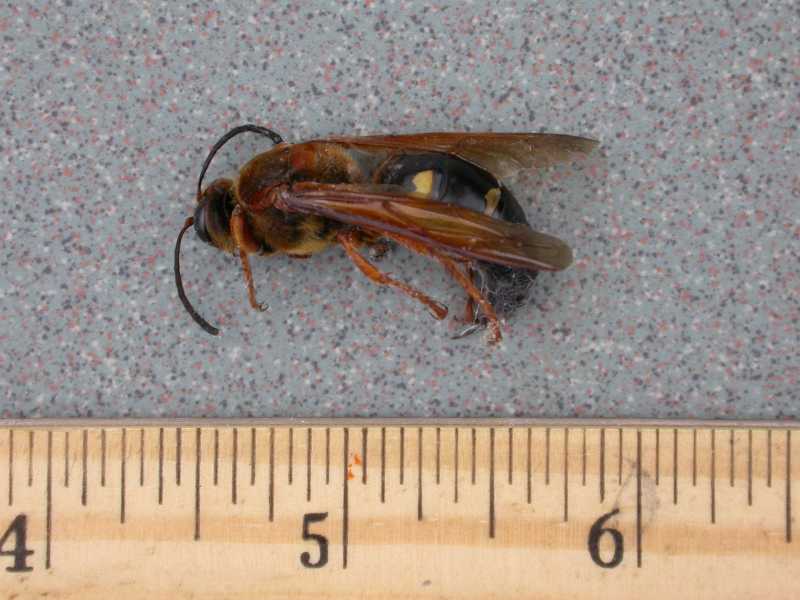 |
| Cicada killer wasps (Hymenoptera), the largest of the hunting wasps, lay their eggs on paralyzed dog-day cicadas. They are considered a beneficial insect. |
|
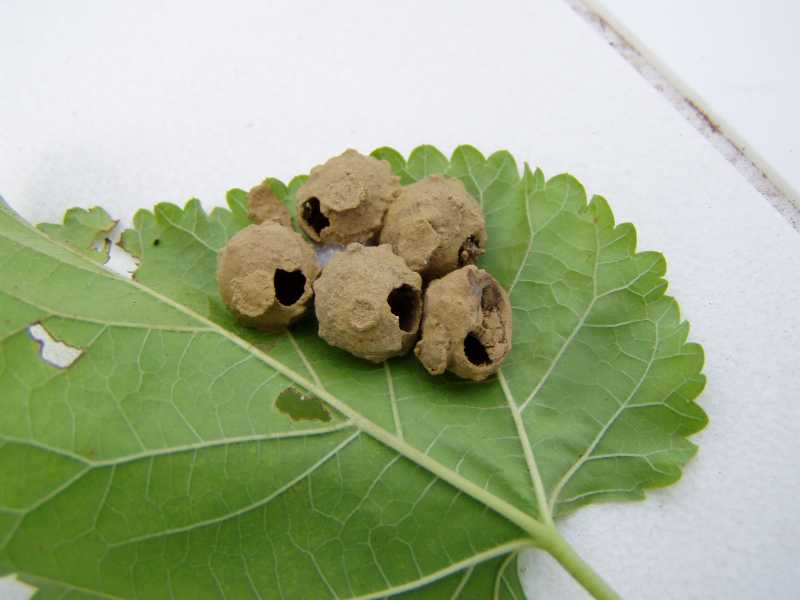 |
| These "pots" were made by potter wasps (Hymenoptera) in which they lay a single egg; these wasps are not aggressive and only sting caterpillars and beetle larvae for their own larvae to eat. |
|
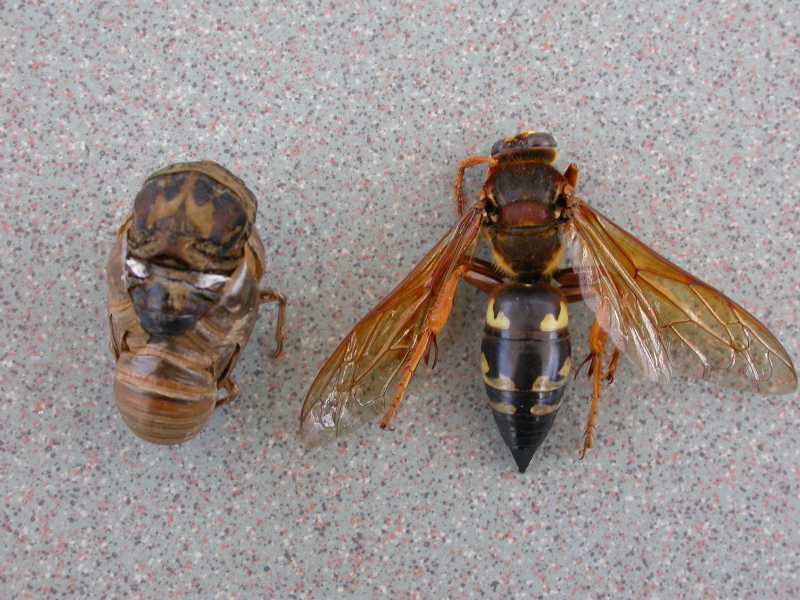 |
| On the right is a cicada killer wasp (Hymenoptera)--a beneficial insect that feeds cicadas to its young; on the left is its prey, an adult cicada (Hemiptera) just prior to molting |
|
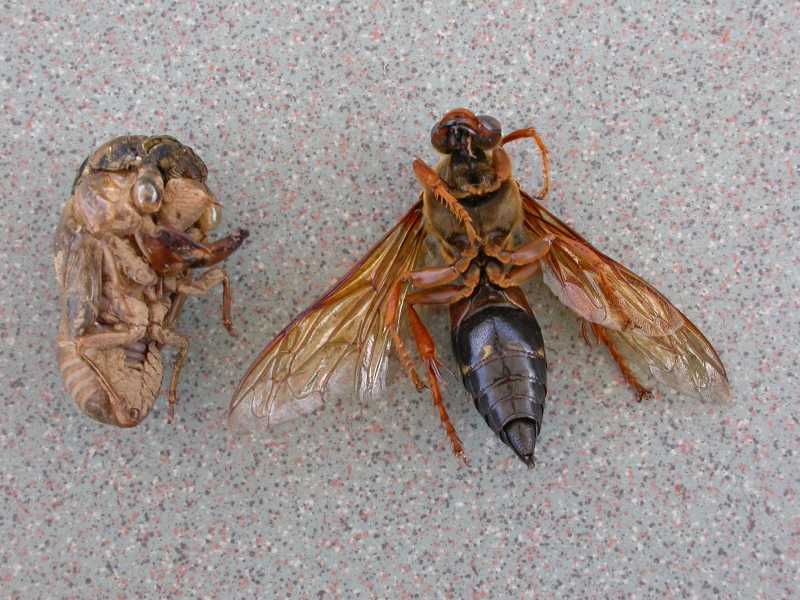 |
| On the right is the underside view of a cicada killer wasp (Hymenoptera); on the left is a sideview of an adult cicada (Hemiptera) just prior to molting |
|
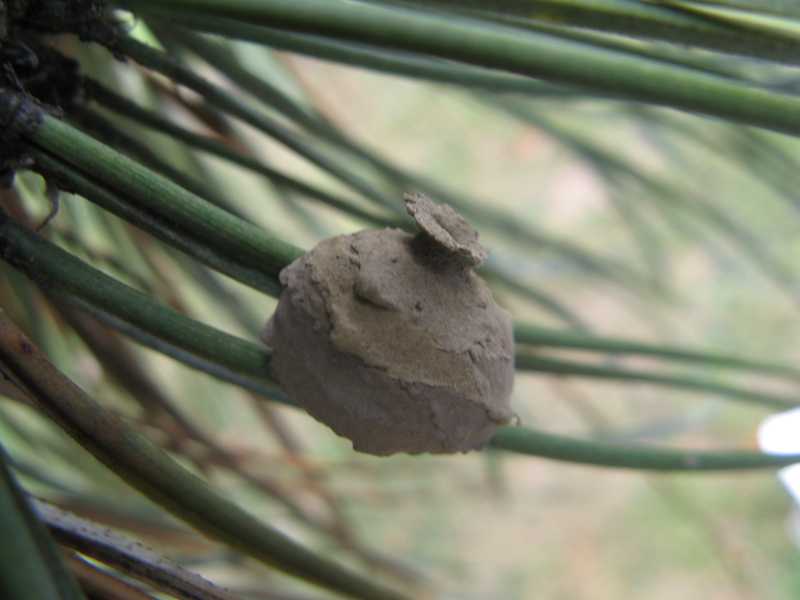 |
| This "pot" was made by a potter wasp (Hymenoptera). A single egg is inside; these wasps are not aggressive and only sting caterpillars and beetle larvae for their own larvae to eat. |
|
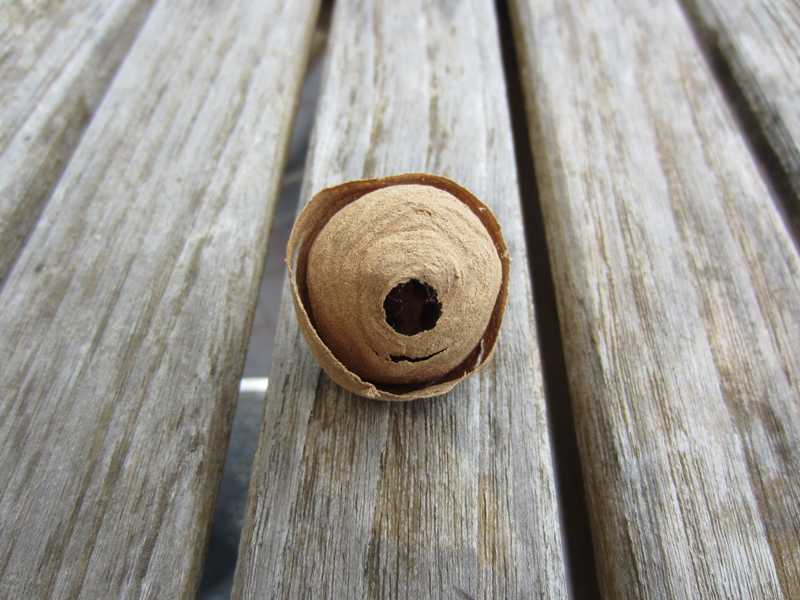 |
| This small papery cone is the beginning of a bald-faced hornets' nest (Hymenoptera). |
|
|